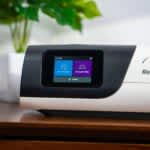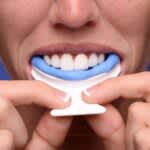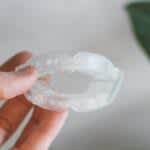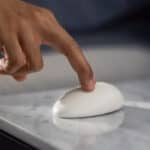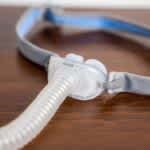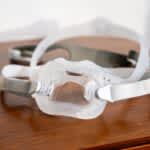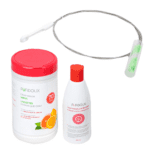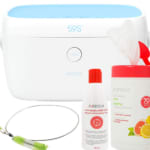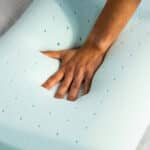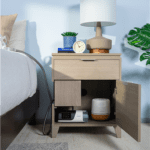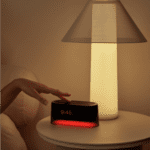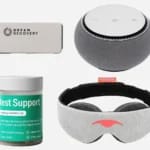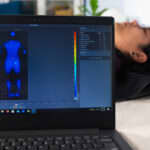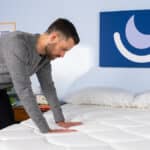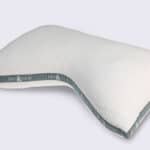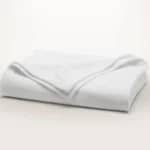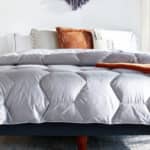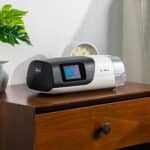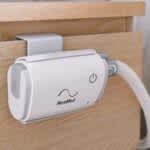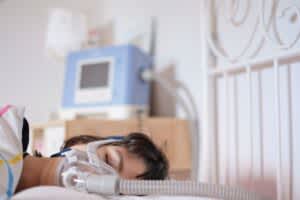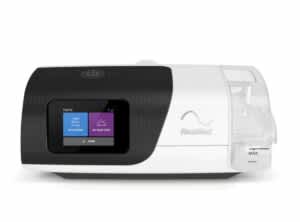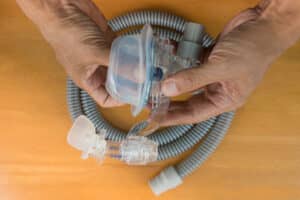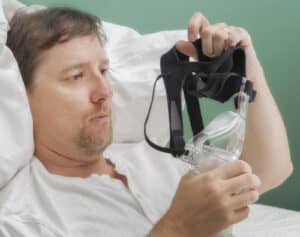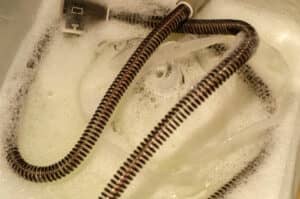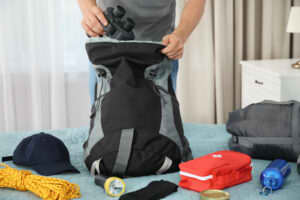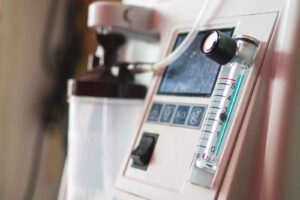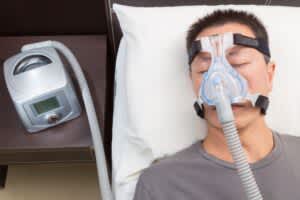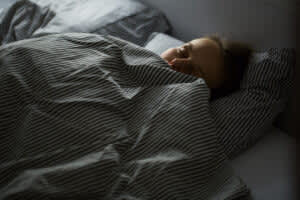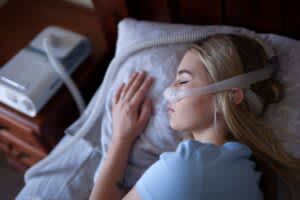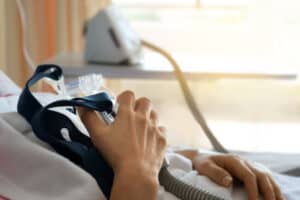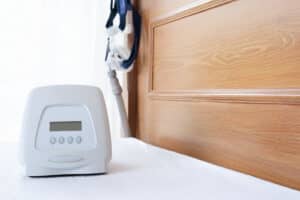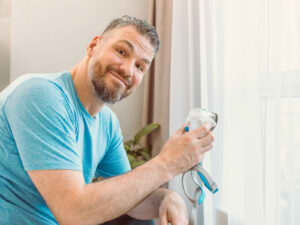Making the decision to start PAP therapy is a big step forward on the path to better sleep.
To ensure your success with CPAP, there are a few things you need to do before you get started.
Since you’ve made it this far, you have likely already received a sleep apnea diagnosis and a prescription for a CPAP machine and accessories. If not, you can quickly and easily take an at-home sleep test, and our sleep care team will review your results within two business days and provide a prescription if applicable.
Choose your PAP machine based on your recommendations from your care provider. They’ll look at things like the level of air pressure you’ll need, how you breathe (through your mouth, nose, or both), and whether or not you’re trying to use insurance to pay for your equipment.
Once you know which machine is best for you, it’s time to choose your mask.
Choosing the Right Mask Type
There are four main types of CPAP masks. There are also a small number of specialty masks, including oral, pediatric, and total-face masks, which are not widely available.
| Type of Mask | Design | Considerations |
|---|---|---|
| Nasal | Covers or cradles the nose but doesn’t go into the nostrils. | Ideal for people who breathe through their nose and don’t move around a lot while sleeping. Can be used with higher pressure levels and comes in a wide range of sizes and shapes. |
| Full-Face | Covers the nose and mouth and, less commonly, the eyes as well. | Works well for people who require high pressure and for those who breathe through their mouth or have frequent nasal congestion. |
| Hybrid | Cradles the nose and covers the mouth. | Offers flexibility for people who switch between mouth and nose breathing at night and want a smaller, less bulky option compared to full-face masks. |
| Nasal Pillow | Fits into the nostrils, doesn’t cover the whole nose. | Lightweight and compact, but may not work for people who need high air pressure. Ideal for people with facial hair and those who prefer minimal contact with the face. |
Measuring Your Face
There are no universal dimensions or guidelines for CPAP mask sizing because different manufacturers and models use their own sizing criteria. Many manufacturers offer printable templates or in-person fitting to help users find the best fit. Sleep Doctor’s Sleep Care Team can walk you through getting the measurements you need to make sure you choose a mask that will be comfortable and effective for your therapy.
Generally, CPAP masks come in small, medium, and large sizes, with some brands offering extra small or extra large options. The sizing depends on the type of mask you get, as well as your facial dimensions. Below is a cheat sheet for what and how to measure using a flexible tape measure, but we’ll list those measurements here as well.
Nasal Mask Sizing Factors:

- Nose width: Measure your nose at its widest part, usually near the nostrils.
- Nose bridge to the upper lip: This helps determine the vertical length of the mask to ensure a proper seal.
Full-Face CPAP Mask Sizing Factors:

- The vertical distance from the bridge of the nose to the chin: The distance between these points helps ensure the right size for full coverage with no leaks.
- Head size: Circumference is typically related to the size of the headgear.
Hybrid CPAP Mask Sizing Factors:

- Width of the nose and mouth area (similar to full-face masks).
- Nose width: Measure your nose at its widest part, usually near the nostrils.
Nasal Pillow Mask Sizing Factors:

- Small, pillow-like cushions fit in your nostrils and create a seal without covering your nose or mouth. Manufacturers often include multiple pillow sizes in the packaging to help users find their most comfortable fit.

Video: Choosing the Right Mask for You
How to Tell if Your Mask Fits
There are two things you should look for to determine whether your mask fits:
- It should feel comfortable: You shouldn’t notice any pressure points or areas of discomfort.
- You should have a strong seal: Turn on your CPAP machine and check for leaks. Move the mask around; switch sleeping positions. If you feel air leaking around the mask, adjust the straps. Be careful not to overtighten, as that can cause discomfort.
It might take trying a few masks to find the best fit, so be sure to check the manufacturer’s return and exchange policies before you buy.
Other PAP Mask Features To Consider
Once you’ve zeroed in on the type of mask you want, there are a few other purchase considerations you should take into account.
Pricing
Like CPAP machines, CPAP masks come in a range of price-points. CPAP masks can cost anywhere from $50 to over $150. The cost of a CPAP mask depends largely on the style, materials, and features.
Sleeping Position
Back sleepers have the most flexibility in choosing a CPAP mask style, with nasal masks, nasal pillows, and full-face masks all being viable options depending on comfort preferences and pressure requirements.
The bulkier design of full-face masks may be uncomfortable for side sleepers, and they may prefer the smaller profile of hybrid or nasal masks or nasal pillows. Stomach sleepers tend to be more limited in their choices, with the minimalist design of nasal pillows often being the only comfortable option.
Pressure Settings
A person’s prescribed CPAP pressure setting can also impact comfort and therapy efficacy. While full-face and nasal masks are more compatible with higher pressure levels, the direct airflow of nasal pillows can be uncomfortable for some users at a high pressure setting and may cause increased nasal irritation and congestion. Using a CPAP humidifier may reduce the likelihood of these side effects.
Feel and Comfort
The best CPAP mask is the one that feels comfortable and allows you to get the full benefits of CPAP therapy on a nightly basis. While some CPAP users enjoy the minimal design of nasal pillow masks, others prefer the indirect airflow of nasal or full-face masks.
If possible, try a variety of models and styles and discuss any comfort issues with your doctor or sleep care specialist. They can help you solve common problems like improper fit, air leaks, dry mouth or nasal passages, and getting used to the sensation of pressure.
Device Compatibility
Make sure that any CPAP mask you purchase is compatible with your CPAP machine. Most CPAP masks on the market are universally compatible, but there are a few exceptions. Double-check compatibility before you buy.
Materials
The materials your mask is made from can impact both durability and comfort. Many CPAP masks consist of a plastic frame with a pliable silicone cushion and one or more elastic straps to hold the mask in place. You can also find CPAP masks that use memory foam or inflatable cushions.
Accessories
CPAP masks generally come with a cushion, headgear, and a frame. These components are all required for your machine to function properly, and you’ll need to replace them periodically.
Optional accessories can improve the comfort of your CPAP experience. These include items like mask liners, chinstraps, and CPAP pillows. Before purchasing any CPAP accessories, be sure to check that they’re compatible with your existing equipment.
Accessories | Description |
|---|---|
Cushions and Headgear | A CPAP cushion is the soft, pliable mask component that rests against your face. Headgear consists of the straps that wrap around your head. These essential components wear out over time and require occasional replacement. |
Hosing | Hosing is an essential component that connects your mask to your CPAP machine. Some CPAP masks come with a short length of tubing, but you may need to buy a longer segment if you want more freedom of movement. Tubing is typically 6 feet long. |
Mask Liners | Mask liners wrap around the cushion of your CPAP mask. This accessory is not essential but can help reduce skin irritation and mask leaks. Liners may also prolong the life of your mask cushion. |
Chinstraps | A CPAP chinstrap is a circular band of stretchy material that wraps around the base of your chin and the top of your head. While not essential, it can help keep your mouth closed and encourage nasal breathing to potentially prevent air leaks and dry mouth. |
CPAP Pillows | CPAP pillows are an optional accessory that may make it easier to sleep with your CPAP mask. These specially designed pillows usually feature a cutout so that you can sleep on your side without dislodging your CPAP mask. |
The Sleep Doctor Forum: Real Experiences, Real Connections
Continue the discussion on the Sleep Doctor Forum. Connect with experts and fellow forum members on CPAP, sleep apnea, and all things sleep. A priceless resource that’s free to join.

